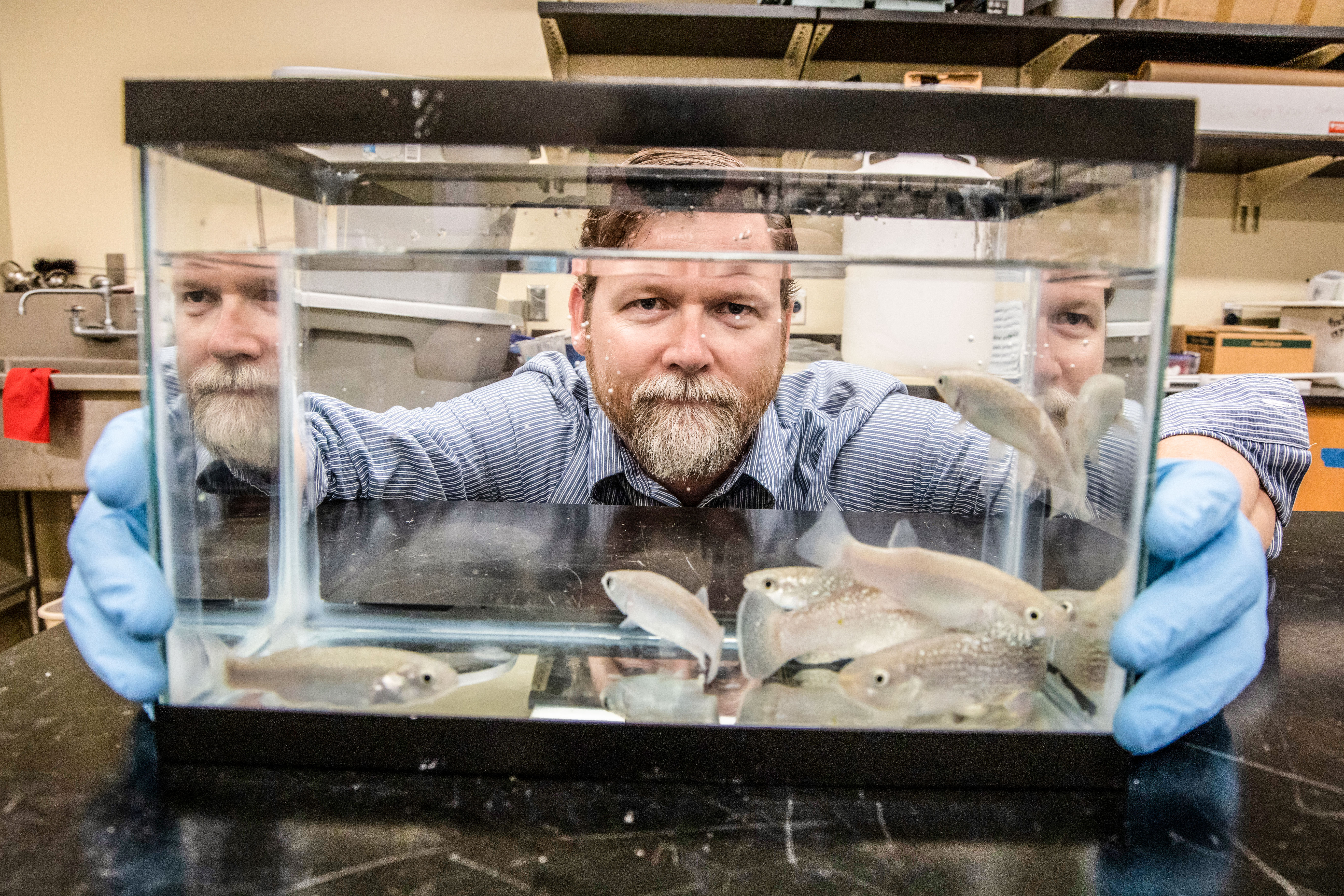Understanding Pollution Tolerance
Recent hybridization of the Gulf killifish — a large minnow common in the heavily polluted Houston Ship Channel — has enabled the species to rapidly adapt to extreme pollution, a Baylor study found.
Cole Matson, PhD, associate professor of environmental science and a member of the Center for Reservoir and Aquatic Systems Research (CRASR) at Baylor, participated in the study.
“Our work demonstrates that hybridization can act as a mechanism of evolutionary rescue — likely not only in response to chemical pollution, but possibly also in response to the rapid environmental changes associated with global climate change,” Matson said.
The study — Adaptive introgression enables evolutionary rescue from extreme environmental pollution — is published in Science, a prestigious journal of the American Association for the Advancement of Science.
Gulf killifish, common inhabitants of coastal estuaries along the northern Gulf of Mexico and Florida Atlantic Coast, are important ecologically and economically. They are a preferred prey of many coastal sport fish, including speckled trout, red drum and flounder.
The substantial industrial pollution in the Houston Ship Channel has long posed a significant challenge to local fish populations, fueling the need for adaptation.
“Radical environmental change that causes population decline can limit the ways species can adapt genetically to survive,” Matson said. “We suggest that both intra- and inter-species connectivity may be important sources of adaptive variation during extreme environmental change.”
Causes for those changes could range from chemical or oil spills to altered salinity to shifting temperatures. In the past, species generally have been able to evolve over centuries, millennia or longer, to survive such changes. Now, they may need to evolve over decades to survive.
“This accelerated pace relies more heavily on existing genetic variation or connectivity to other populations, as beneficial genetic mutation is quite rare,” Matson said.
Elias Oziolor, PhD ’17, conducted much of the study as part of his dissertation research at Baylor. He is a senior scientist at Pfizer.
“Natural populations rely on genetic variation to allow them to rapidly adapt,” Oziolor said of extreme change. “The huge population sizes of Gulf killifish allow them to retain a large amount of genetic variation. Under radical pollution pressure, the ultimate solution was not their own genetic variation but variation they were lucky enough to capture from their sister species — the Atlantic killifish — through hybridization.”
Gulf killifish from 12 sites in the Houston Ship Channel and Galveston Bay with varying pollution levels were cultured in Baylor aquaculture facilities, including the collection of embryos to test for pollution tolerance. Researchers found that fish from the most polluted sites were most resistant to pollution and that the resistance was inherited through multiple generations.
The two genomic regions under the strongest selection traced back to Atlantic killifish rather than Gulf killifish, a result of recent hybridization believed to have occurred as a result of human activity, possibly in ballast water from a large ship.
“The impact on other fish species is unclear and an area of future research,” Matson said. “We are also very interested in how Gulf killifish from other polluted regions have responded to pollution.”
Matson said the study does not suggest that hybridization will solve environmental challenges. He also said factors such as the limited duration of this hybridization event “provided a rare set of circumstances allowing for adaptive introgression without any evidence of the harmful genetic baggage one might expect as a result of hybridization.”
More research is required to understand the relative importance of various mechanisms of evolutionary rescue, according to Matson.
“Hybridization is not likely to be a commonly utilized mechanism of evolutionary rescue,” he said. “But this study clearly shows that it is possible.”
